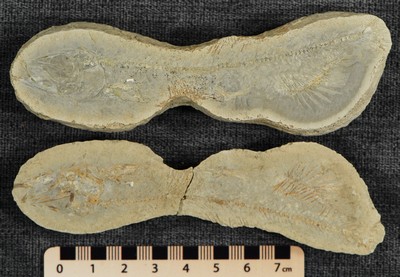About 12,000 years ago, near the end of the last Ice Age, the ice margin had retreated north of the Ottawa and St. Lawrence valleys. The weight of the thick glacial ice had depressed the surface of the land well below sea level allowing marine water to invade the area and create the Champlain Sea.
Many Champlain Sea fossils have been found. The most common ones in the Ottawa area are the fossilized remains of small fish found in its underlying Leda clay. In 1872, William Dawson, Principal of McGill University, made note of these fine fossils in a report he dedicated to his friend and long-time colleague Geological Survey of Canada founder Sir William Logan: “…Green’s Creek, a little below Ottawa city, has become celebrated for the occurrence of hard calcareous nodules in the clay, containing not only the ordinary shells of this deposit, but also well-preserved skeletons of the Capelin (Mallotus), of the Lump-sucker (Cyclopterus), and of a species of stickleback (Gasterosteus)."
Leda clay is notoriously unstable and is responsible for landslides around Ottawa and across the St Lawrence Lowlands. The rebound of the land from its glacially depressed level continues to this day.
Category: Rocks, Fossils, Minerals and Meteorites
Decade: 1870s


